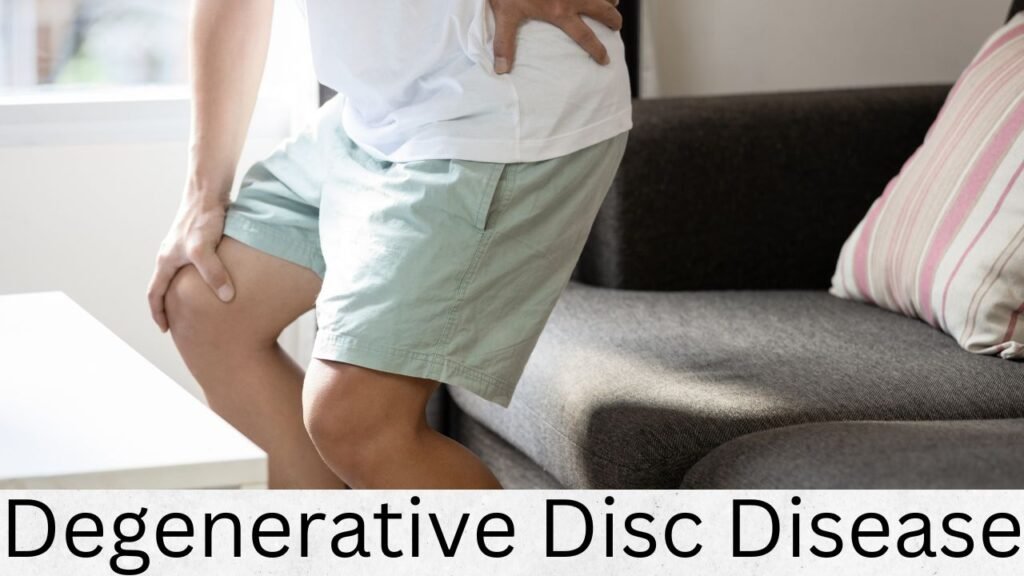Understanding Degenerative Disc Disease
Degenerative Disc Disease (DDD) is a common condition that affects the spine as people age. Despite its name, it is not technically a disease but a term used to describe the natural wear and tear of spinal discs over time. These discs act as cushions between the vertebrae, providing flexibility and absorbing shock. When they begin to break down, stiffness, soreness, and even chronic pain can occur.

Causes of Degenerative Disc Disease
DDD primarily results from aging, but other factors can accelerate disc degeneration. Some key causes include:
- Loss of Disc Hydration – Healthy discs contain a high percentage of water, allowing them to absorb impact efficiently. Over time, discs lose moisture, making them less effective at cushioning the spine.
- Wear and Tear – Repetitive movements, poor posture, and physical strain can gradually wear down the discs.
- Injury – Trauma from accidents or sports-related injuries can accelerate disc degeneration.
- Genetics – Some people are predisposed to early disc degeneration due to hereditary factors.
- Obesity – Excess weight puts additional stress on the spine, leading to faster deterioration of the discs.
- Smoking – Nicotine reduces blood flow to spinal discs, preventing them from receiving necessary nutrients for repair.
Symptoms of Degenerative Disc Disease
The symptoms of DDD vary from mild discomfort to severe, chronic pain. Common signs include:
- Back or Neck Pain – Depending on the affected area, DDD can cause pain in the lower back or cervical spine.
- Stiffness and Limited Mobility – Reduced disc flexibility leads to difficulty bending, twisting, or performing daily activities.
- Pain That Worsens with Activity – Sitting for long periods, lifting heavy objects, or sudden movements can intensify discomfort.
- Numbness and Tingling – If disc degeneration leads to nerve compression, it can cause tingling sensations in the arms, legs, or buttocks.
- Radiating Pain – In severe cases, pain can spread down the legs or arms, indicating nerve involvement.
How to Manage Degenerative Disc Disease
While DDD cannot be completely reversed, several strategies can help manage symptoms and slow down progression.
1. Exercise and Physical Therapy
A targeted exercise routine strengthens the muscles that support the spine. Physical therapy can improve posture, increase flexibility, and reduce pressure on degenerating discs. Recommended exercises include:
- Core strengthening – Exercises like planks and bridges help stabilize the spine.
- Stretching – Gentle stretches improve flexibility and reduce stiffness.
- Low-impact activities – Walking, swimming, or cycling keep the spine mobile without excessive strain.
2. Pain Management Strategies
Several options can help relieve discomfort associated with DDD:
- Over-the-Counter Medications – NSAIDs (like ibuprofen) reduce inflammation and ease pain.
- Heat and Cold Therapy – Heat relaxes muscles and improves blood circulation, while cold packs reduce swelling and numb sharp pain.
- Massage Therapy – Helps relieve tension and improve blood flow to the affected area.
- Acupuncture – Some individuals find relief from alternative therapies like acupuncture, which may help reduce nerve pain.
3. Lifestyle Adjustments
Making simple lifestyle changes can help manage DDD symptoms effectively:
- Maintain Good Posture – Sitting and standing with proper spinal alignment reduces stress on the discs.
- Weight Management – Maintaining a healthy weight minimizes excessive strain on the spine.
- Stay Active – Avoid prolonged sitting, which can worsen stiffness and pain.
- Quit Smoking – Eliminating nicotine improves circulation to spinal discs and slows degeneration.
4. Medical Treatments
If conservative treatments fail to provide relief, medical interventions may be necessary:
- Corticosteroid Injections – Reduce inflammation and alleviate pain in severe cases.
- Chiropractic Care – Spinal adjustments may help relieve pressure on affected areas.
- Surgical Options – In extreme cases, procedures like spinal fusion or artificial disc replacement may be recommended.
When to Seek Medical Attention
Mild discomfort from DDD can often be managed with lifestyle changes and conservative treatments. However, if symptoms worsen or interfere with daily activities, it’s essential to seek medical advice. Red flags that require prompt evaluation include:
- Severe or Persistent Pain – Pain that does not improve with rest or medication.
- Weakness or Numbness – Loss of strength in the arms or legs could indicate nerve compression.
- Bowel or Bladder Issues – Difficulty controlling bladder or bowel function may signal a serious spinal condition.
Conclusion
Degenerative Disc Disease is a natural part of aging, but it doesn’t have to control your life. By staying active, maintaining a healthy lifestyle, and seeking appropriate treatments, you can manage symptoms and maintain mobility. If back stiffness and soreness become a daily struggle, consult a healthcare professional to explore the best options for relief and long-term spinal health.